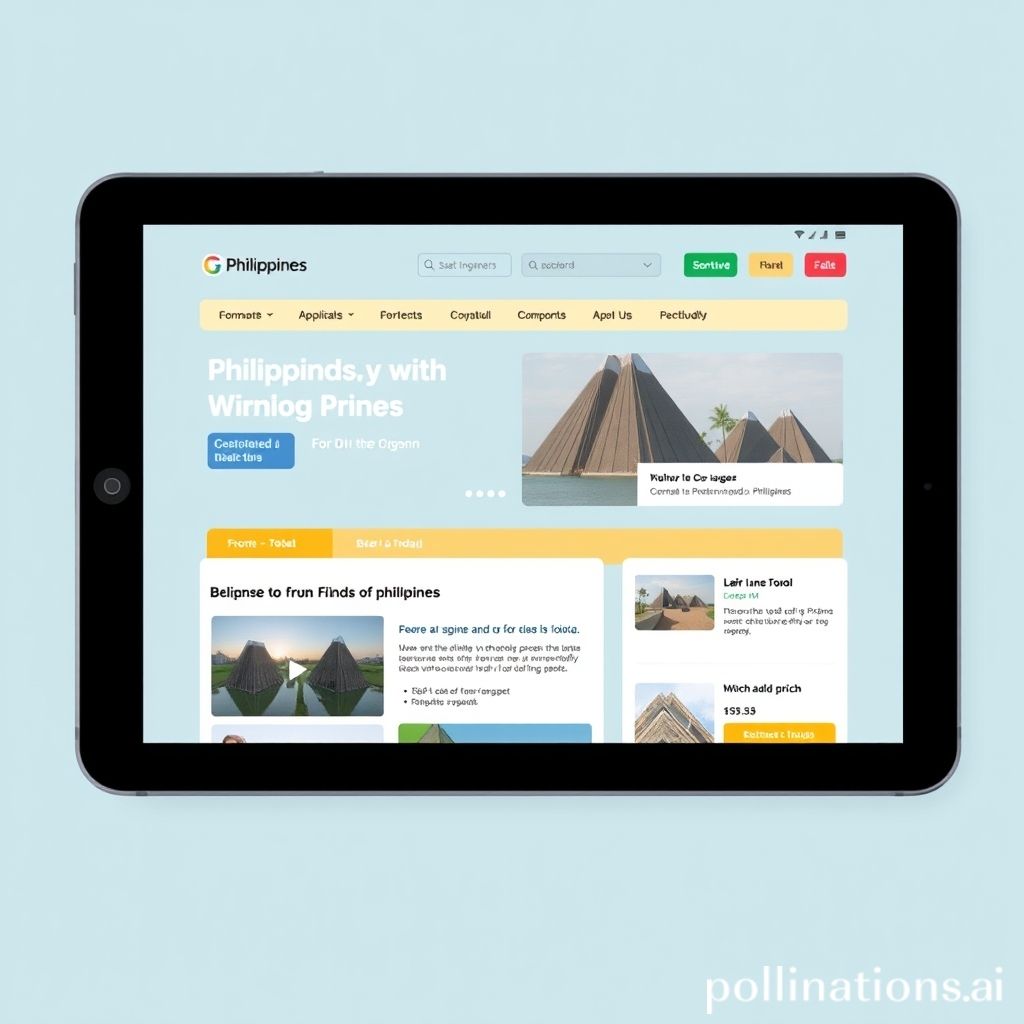Mobile-Friendly Websites Philippines
As businesses in the Philippines steadily shift towards the digital landscape, creating mobile-friendly websites in the Philippines has become not just an option, but a necessity. Today’s users predominantly access the internet via mobile devices. Therefore, ensuring that your website is optimized for mobile viewing is crucial for retaining visitor attention and enhancing user experience.

Understanding Mobile-Friendly Design
Mobile-friendly design refers to a website’s ability to adapt and function seamlessly across various screen sizes and devices. A mobile-optimized site offers quicker load times, accessible navigation, and easily readable content. This responsiveness ensures an ideal experience irrespective of the device used by the visitor.
The Importance of Mobile-Friendly Websites
Google recognizes the growing trend of mobile browsing. Consequently, it places higher rankings on websites that provide mobile-friendly experiences. If your site fails to meet these criteria, it may drop off search engine results pages (SERPs), limiting your reach. A mobile-friendly website not only attracts more visitors but also fosters better engagement. Here are some key benefits:
- Improved SEO performance.
- Increased conversion rates.
- Higher customer satisfaction.
- Wider audience reach.
Technical SEO Services in the Philippines
It’s essential to pair a mobile-friendly design with robust technical SEO services in the Philippines. Technical SEO ensures that search engines can crawl, index, and render your website effectively, which is vital for its overall performance. Services such as optimizing site speed, creating a sitemap, and ensuring proper use of header tags contribute significantly to a site’s visibility.
Key Elements of Technical SEO
To enhance your website’s technical performance, consider focusing on:
- **Website Speed:** Websites should load within a few seconds to prevent users from abandoning the page.
- **Mobile Responsiveness:** This includes having a site that adjusts for various screens.
- **Secure Connections:** Ensuring your site has an HTTPS certificate is crucial for user trust and SEO.
- **Proper Indexing:** Utilize tools like Google Search Console to ensure your pages are indexed correctly.
On-Page Optimization in the Philippines
When discussing on-page optimization in the Philippines, it’s essential to remember that mobile-friendliness plays a significant role. This optimization includes refining individual web pages to rank higher and earn more relevant traffic from search engines. It involves content optimization, title tags, meta descriptions, and other crucial elements.
Strategies for Effective On-Page Optimization
Here are some strategies to incorporate:
- **Optimize Content:** Ensure that your content is concise and relevant. Use keywords naturally throughout.
- **Image Optimization:** This includes using descriptive, keyword-rich file names and alt tags for images.
- **Use Header Tags:** Proper use of H1, H2, and H3 tags aids in content organization.
- **Internal Linking:** Connect relevant pages on your site to enhance navigation and SEO.
Improving User Experience with Mobile-Friendly Websites
User experience is paramount. A seamless experience encourages users to stay longer on your site, translating to higher chances of conversion. Here are some ways to improve user experience through your mobile-friendly website:
- **Clear Navigation:** Ensure that menus are easily accessible and intuitive.
- **Readable Text:** Text should be large enough to read without the need to zoom in.
- **Touch-Friendly Buttons:** Buttons should be large and spaced adequately to avoid misclicks.
Analyzing the Competition
Studying competitors who excel in mobile-friendly design can provide valuable insights. Identify their strengths and weaknesses, then leverage this information to improve your own site. Tools like SEMrush or Ahrefs can help analyze competitors’ website performance and SEO efforts.
Implementing Best Practices
While every business is unique, adhering to some best practices can help create an effective mobile-friendly website:
- Use responsive web design.
- Minimize pop-ups that obstruct content.
- Optimize forms for mobile submission.
- Ensure compatibility across all devices.
Frequently Asked Questions
What does it mean for a website to be mobile-friendly?
A mobile-friendly website is designed to provide an optimal viewing experience on mobile devices, featuring responsive design, quick loading times, and easy navigation.
How can I check if my website is mobile-friendly?
You can use Google’s Mobile-Friendly Test tool, which analyzes your site and provides feedback on its performance on mobile devices.
Are there specific SEO strategies for mobile-friendly websites?
Yes, focusing on technical SEO, on-page optimization, and providing an excellent user experience are crucial strategies for optimizing mobile-friendly websites for search engines.
How important is site speed for mobile sites?
Site speed is extremely important. If your site takes too long to load, users might leave before even seeing your content. It’s critical to aim for fast loading times.
Final Thoughts
Creating effective mobile-friendly websites in the Philippines is a fundamental aspect of modern digital marketing. By prioritizing mobile responsiveness, optimizing your site’s technical elements, and enhancing user experience, you pave the way for increased engagement and conversion. The digital world is evolving rapidly, and staying ahead requires adapting to these changes proficiently.
Want to enhance your online presence? Let us help you optimize for the mobile world! Reach out to us by visiting www.bentamo.site today!